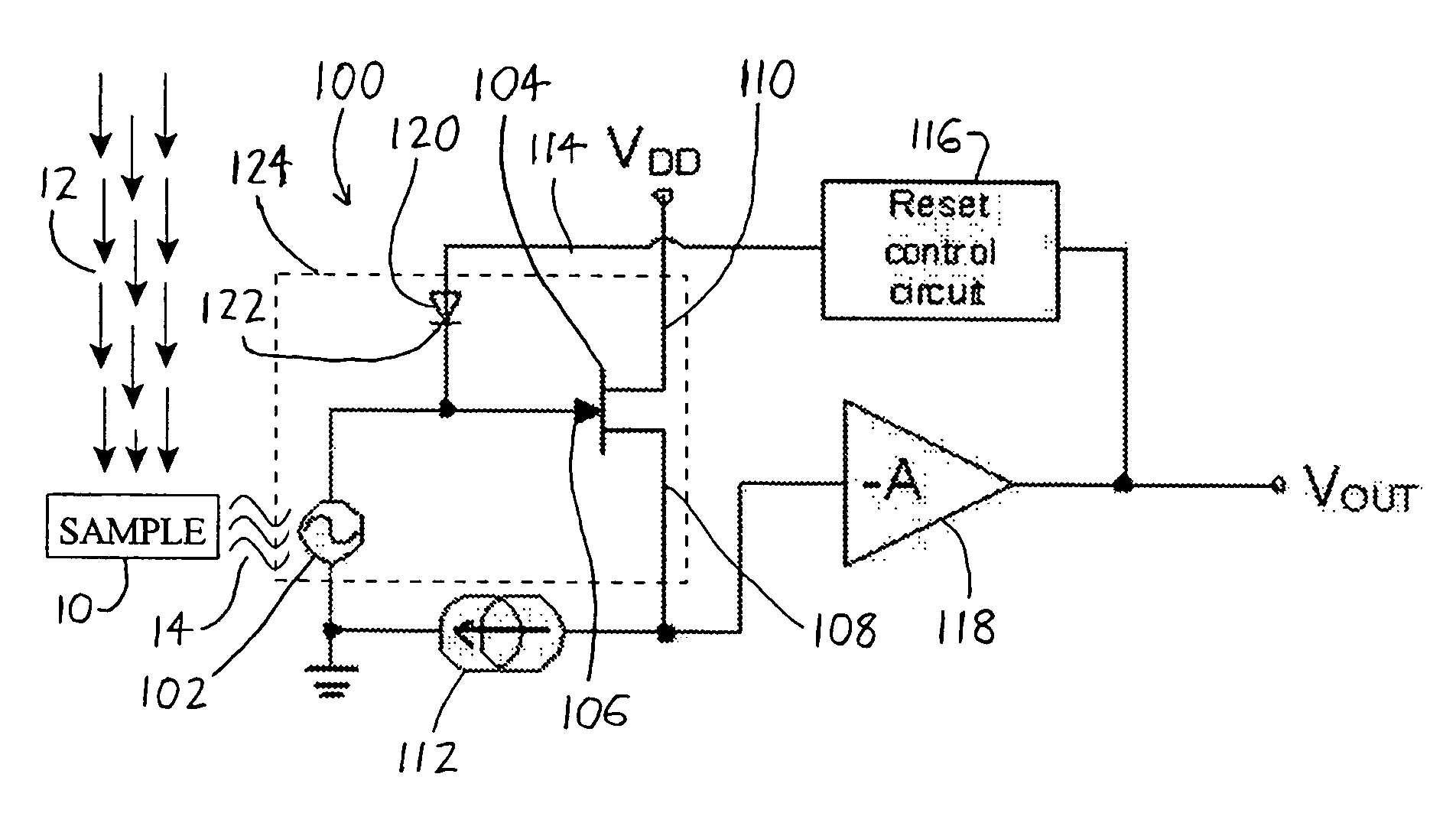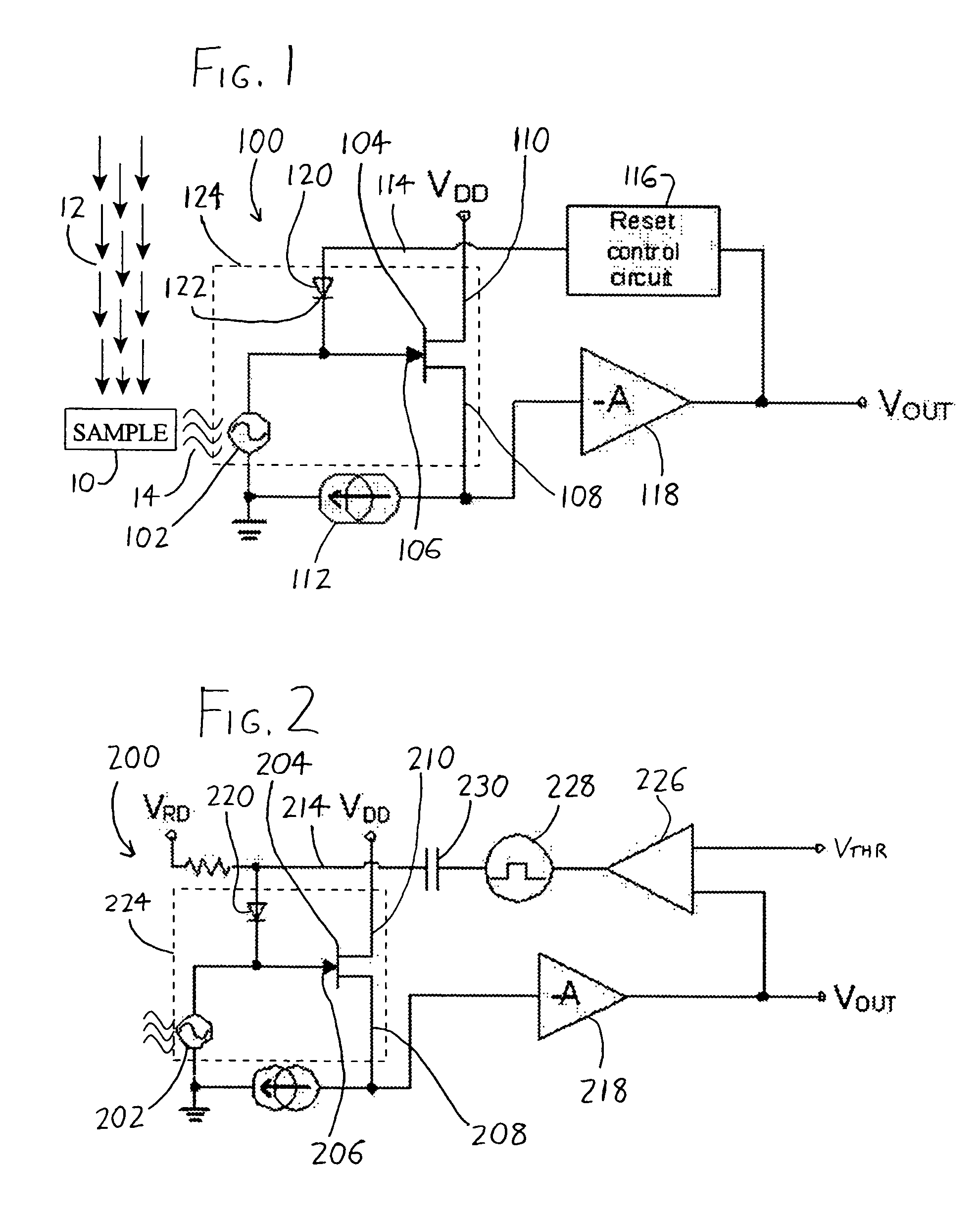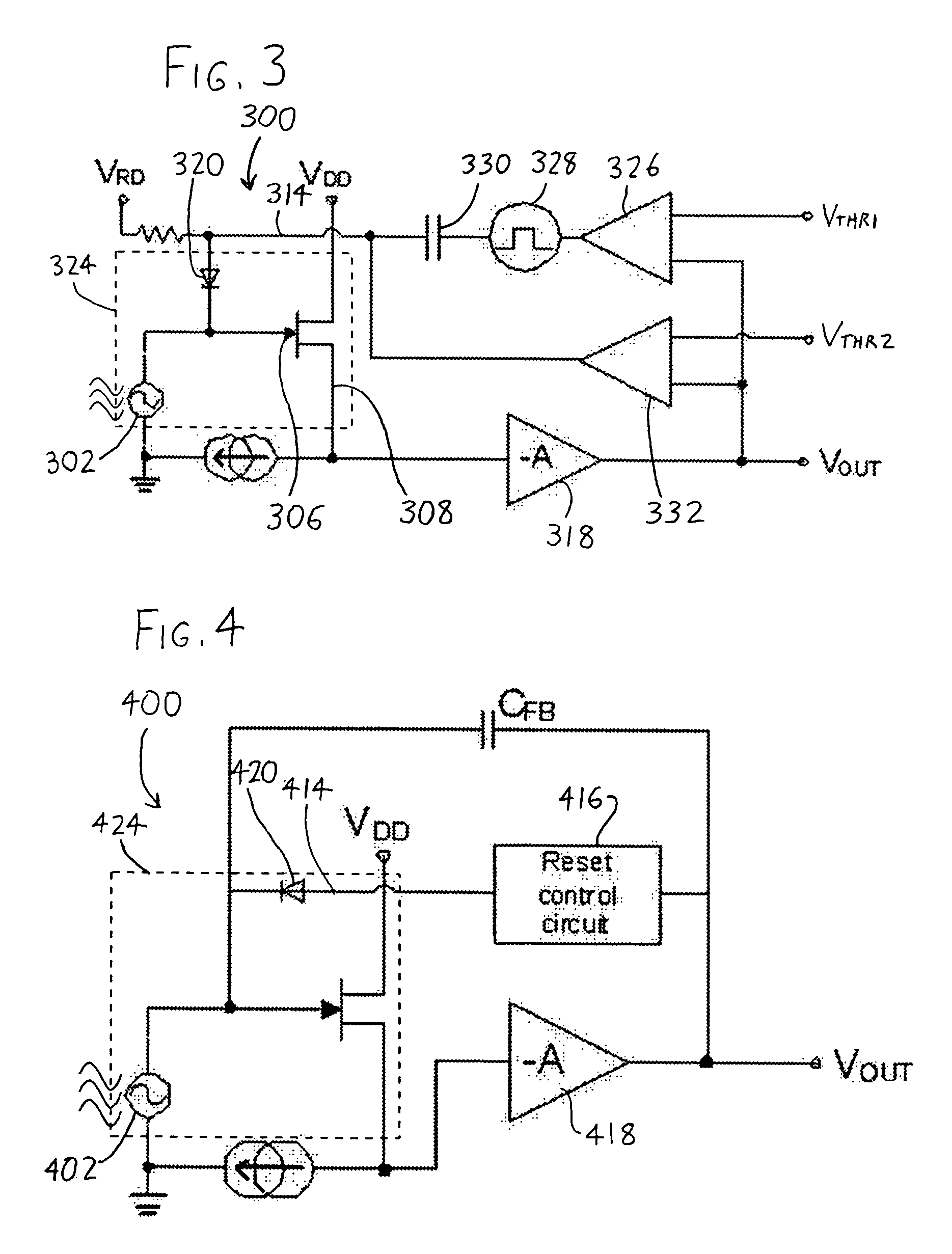Feedback circuit for output control in a semiconductor X-ray detector
a technology of output control and x-ray detector, which is applied in the field of x-ray detectors, can solve the problems of not being able to accommodate x-ray photon counts, requiring cryogenic temperatures for greatest accuracy, and difficulty in interpreting their significan
- Summary
- Abstract
- Description
- Claims
- Application Information
AI Technical Summary
Benefits of technology
Problems solved by technology
Method used
Image
Examples
Embodiment Construction
[0019]Following is a list of exemplary components that may be used in the foregoing detectors, though it should be understood that any other suitable components may be used.
[0020]The semiconductor detectors 102 / 202 / 302 / 402 (and more generally the detector chips / blocks 124 / 224 / 324 / 424) may take the form of PSD-10-130, PSD-30-140, or SD3-10-128 Silicon Drift Detector modules from PNSensor GmbH (Munich, Germany), which usefully have an onboard FET.
[0021]The amplifiers / buffers 118 / 218 / 318 may take the form of the AD829 operational amplifier (Analog Devices, Norwood, Mass., USA) operating in net unity gain. However, this is not preferred for the amplifier 418, which has nonunity gain for optimal operation. Thus, the amplifiers 118 / 218 / 318 / 418 may take the form of a two-stage amplifier using the foregoing AD829 operational amplifier, e.g., with the first stage amplifier providing a non-inverting voltage gain of 16, and the second stage amplifier providing an inverting voltage gain of 4 (a...
PUM
 Login to View More
Login to View More Abstract
Description
Claims
Application Information
 Login to View More
Login to View More - R&D
- Intellectual Property
- Life Sciences
- Materials
- Tech Scout
- Unparalleled Data Quality
- Higher Quality Content
- 60% Fewer Hallucinations
Browse by: Latest US Patents, China's latest patents, Technical Efficacy Thesaurus, Application Domain, Technology Topic, Popular Technical Reports.
© 2025 PatSnap. All rights reserved.Legal|Privacy policy|Modern Slavery Act Transparency Statement|Sitemap|About US| Contact US: help@patsnap.com



